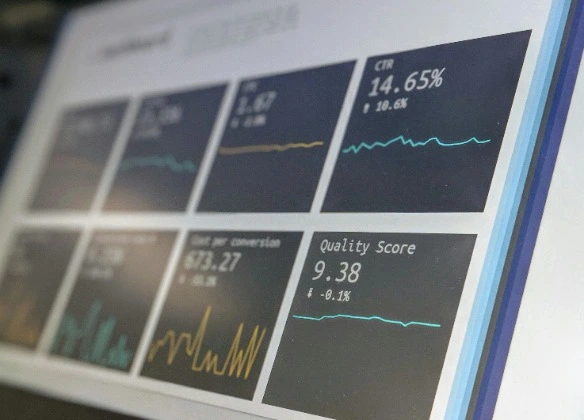

Internet protocol video, or IP Video, is playing an increasingly significant role in supporting the Olympic Games by enabling advanced broadcasting capabilities while enhancing the venue experiences for fans from all over the world to enjoy the quadrennial event.
As the world draws attention to the Paris Olympics this summer, IP Video will be leveraged to optimize experiences at stadiums, arenas, and other event spaces. It will broadcast information and live feeds to screens throughout facilities, keeping athletes, staff, and spectators informed while enabling live streaming coverage to smartphones, tablets, computers, and TVs in real time.
Nicolas Quesne, Deputy CEO of VITEC, a global leader in end-to-end streaming solutions and video encoding innovation.
How is IP Video critical to the infrastructure at the Olympic Games?
Hosting the Olympics involves massive infrastructure overhauls for the host city or country. The goal for the leaders managing these projects is to build systems that are reusable and can deliver video content to consumers.
Today, viewers at live events expect video experiences that replicate the quality they receive at home, even when they are on the go and inside the venues. As a result, IP Video has emerged as a critical consideration for leaders responsible for new facility construction — as well as those who are updating existing venues. They are looking at IP Video for several reasons.
The first is that legacy RF technology is rigid and inflexible. It is a dedicated technology that cannot be readily redeployed to support different applications. By contrast, IP Video can be used to show the action on the field of play and then, with the push of a few buttons, be adapted to promote offerings available at concessions stands or enhance crowd management by providing directions.
As a result, a growing number of leaders responsible for building or refurbishing stadiums are focused on using scalable, modular technologies, like IP Video, to distribute video content over various networks, including over-the-top (OTT) infrastructures, intranets, and public internet resources. IP Video systems broaden the ability of event organizers to tailor experiences to different users across various scenarios and situations.
Another reason has to do with consumer expectations. The people themselves are indeed driving demand for both ubiquity (they want access to content from anywhere) and personalization (they want to experience content on the device — and in the format — that they choose). Legacy technologies can’t meet these expectations.
Venue leaders: they can enhance the onsite experience with IP Video
Outdoor stadiums and indoor arenas hosting different sporting events—from track and field to gymnastics—can be enormous. Despite their size, venues struggle to meet demand for seats at Olympic events. As a result, even expensive seats can have obstructed views. By increasing the number of screens throughout the stadium, IP Video can enhance the viewer experience or enable people to enjoy live content on their personal devices because Wi-Fi or wired can display live events anywhere in the venue.
Additionally, IP Video can offer more than just video; it can deliver digital signage to show scores as well as provide interactive maps and wayfinding services for out-of-town visitors who may not be familiar with the local geography. This helps attendees find amenities and navigate the stadium, which is crucial for large venues hosting multiple events.
IP Video also plays a crucial role in public safety at these events because video is a universal language that can effectively communicate and engage with people from different linguistic and cultural backgrounds.
IP Video screens can quickly switch from showing action on the field to displaying simple, intuitive warning signs or directional indicators to ensure venue safety for everyone, regardless of language. Moreover, IP Video systems enable centralized management of these messages, ensuring timely and accurate communication.
IP Video boosts the centralized management capabilities for large sporting venues
With IP video, there’s no need to physically manage each TV. Everything can be controlled centrally, allowing managers to focus on content rather than technical issues. For example, during the Olympics, scores and live feeds can be displayed selectively across different courts and areas, all managed from a single point. This central management is vital for efficiently running large events.
IP Video technology significantly enhances the management of large sporting venues by providing centralized control and monitoring of all video feeds and displays from a single location. This centralized system simplifies content management across multiple screens, ensuring consistent and timely updates. It is highly scalable and flexible. It supports dynamic content delivery, enabling live video, advertisements, real-time statistics, and urgent messages to be quickly updated and displayed.
Well-crafted and designed emergency management notifications can work very well regardless of language or cultural background by displaying moving arrows and intuitive video iconography.
The economic implications of using IP Video at the Olympics
Deploying IP Video to optimize resource allocation before, during, and after Olympic events can have significant financial implications. By leveraging existing infrastructure and adopting a modular approach, IP Video can minimize the need for costly dedicated systems. This strategy enhances flexibility, scalability, and integration, which is crucial for meeting the diverse needs of a global fan base and various Olympic venues.
The reusability and redistribution of IP Video equipment across venues and cities can provide enduring economic value. Rather than discarding equipment and other resources after the event, local and regional leaders can repurpose network, routing, screens — and other aspects of IP Video — to be used for future live events or entirely different applications. This enhances cost efficiency and sustainability over time.
how IP Video contributes to meeting environmental objectives
Using IP Video to fulfil the video requirements of Olympic events can result in favorable long-term sustainability outcomes across multiple dimensions. IP Video is simply a more adaptable and flexible video distribution system than legacy technologies. It allows venues to leverage existing infrastructure and swiftly reconfigure video setups, minimizing the need for extensive and environmentally taxing physical installations for each event.
It also enables the integration of diverse technologies and services, including digital signage and interactive features. These integration capabilities enhance the overall fan experience while streamlining resource usage by eliminating the necessity for separate systems and equipment without duplicating efforts that would expand the carbon footprint of the project.
On a similar note, as the number of venues and sports grows, IP Video can accommodate increased video content delivery needs without substantial infrastructure expansion, thereby reducing resource strain and waste.
IP Video enables the dissemination of video content beyond venue boundaries, allowing remote access and enjoyment of the same content. This feature reduces the reliance on physical attendance and associated travel emissions, contributing to environmental sustainability.
One of IP Video’s key advantages is its ability to leverage existing infrastructure and adapt to different venues. After a large-scale global event, such as the Olympics, IP Video equipment and technology can be reused and redistributed to other venues, reducing the need for new infrastructure and minimizing waste.
Additionally, IP Video allows for more efficient resource management because of its scalable and modular nature. New IP Video can be added or withdrawn without disrupting the underlying infrastructure. This approach helps to minimize environmental impact and promote sustainability.

Technology
25 March 2025
Ransomware-As-A-Service Variants on the Rise With Critical Infrastructure Providers at the Greatest Risk

Business Advice
25 March 2025
Claims Processing Automation: How Insurers Can Cut Costs and Improve CX

Technology
18 March 2025
Secret Signs Your Internet Security Has Been Compromised






















